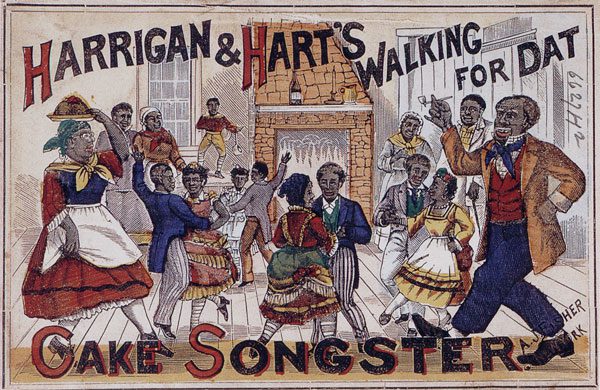Every year in my elementary school, we would have annual cake walks. I absolutely loved them and thought they were an absolutely brilliant way to fundraise money. I mean how much better could it get? Let me set the scene: a huge table is placed in the middle of a room and completely filling up the perimeter of that table is cake. That’s right, I said CAKE. Every shape, size, color and flavor of cake is on that table, with a number sitting next to it, waiting for someone to claim it! Music playing in the background allowed for any and everyone to dance, specifically around the table and similarly to a game of musical chairs, once that music stopped, you stopped right in front of one of those prized cakes and the bidding begins. Now, this all sounds like innocent fun to take home a delicious homemade treat and send some young girls to a camping trip with their Girl Scout Troop, but the true and often unknown history of cake walks is a bit more dark than that.
The main components of Ragtime were the practices of composing and playing a popular song, dance and instrumental music. sheet music was created to document the notes, usually for piano.
This new genre of music was more upbeat and syncopated than what society had been used to with Jubilee Quartets.
Folks were beginning to dance more, and slave masters formed these new slave dances, one very famous one was the “cake walk”.


Cakewalks were dances that parodied and made fun of White upperclass behaviors. It would be performed on stages by slaves and slave masters had no idea they were being mocked.
The best performance would receive a prize, which was normally a cake (hence the name). Some elements of cakewalks were dignified walking, bowing very low, lifting noses high in the air, and waving canes.
After an exhibition at 1893 World’s Fair in Chicago and a competition at Madison Square Garden, cakewalks began to become mass productions and grew to become of the most popular dances on the vaudeville stage and in ballrooms in both the United States and Europe.
See, I told you the truth behind cake walks was deeper and darker than just people dancing around a table of cakes with hopes to take one home! Although it is quite sad that enslaved African Americans had to express themselves secretly to avoid punishment from slave masters, it is quite humorous to see how they did just that. I will never participate in a cake walk ever again due to the knowledge I know now, but it brings me joy to know that our ancestors were extremely witty and clever with their antics, in a weird way it is a lesson that we can all learn from them: in times of discrimination, be cunning and artistic to express your real feelings about the oppressor!

Login to your account